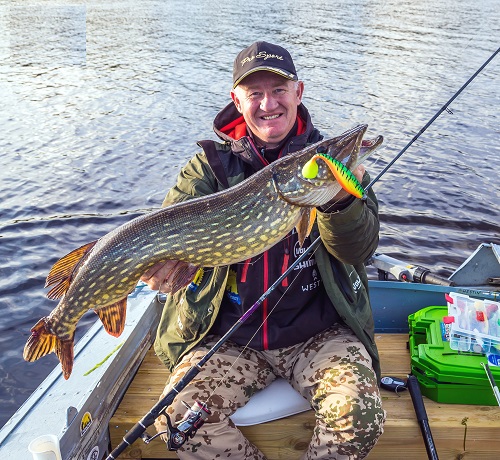EU Member States must work to ensure that all bodies of surface water are at least in good condition

The pollution of surface water bodies with hazardous substances in Estonia occurs primarily in connection with pollution from oil shale production in Ida-Viru County since the 1930s. However, a more significant pollution load from agriculture (manure, fertilisers, pesticide residues) arose during the Soviet era as production intensified. In addition, the wastewater from settlements and industry, which did not have treatment systems at the time, was discharged directly into water bodies. As a result, in 1970s and 1980s, the state of water bodies worsened significantly [1].
By the turn of the twenty-first century, the condition of water bodies had improved considerably due to changes in socio-economic formation. Namely, with the collapse of the collective farm system, agricultural production stalled and wastewater treatment plants for settlements and the industry were established. The nitrogen content of the lakes decreased, the overgrowth of the lakes slowed down, and their condition improved.
How is the state of a water body assessed?
Surface water status is recorded by bodies of surface water. It is important to distinguish between a water body and a body of water. Where a water body is a river, lake, or other water body existing in nature, bodies of water are considered to be water bodies or parts thereof according to the natural type and the potential impact of human activities [2]. For example, the Selja River is divided into four different bodies of water. There are currently 744 bodies of water whose status needs to be determined (635 in watercourses, 93 in lakes, 16 in coastal waters).
According to the EU Water Framework Directive, the status of bodies of water is assessed on the basis of their ecological status (ecological potential in the case of heavily modified water bodies) and their chemical status. The ecological status of a body of surface water is characterised by five status classes: high, good, moderate, poor, and bad. The chemical status of a body of surface water is characterised by two status classes: good and poor.
As of 2022, 31% of all bodies of surface water are in a good status, 32% are in moderate status, 36% in poor status and less than 1% in bad status. There was no bodies of water in high status. Specifically, 35% of watercourse bodies of water are in good status and 9% of lakes have achieved a good status as well. For more information, see the Environment Agency’s bodies of water map application.

How to improve the state of water bodies?
In Estonia, a water management plan has been prepared for each river basin, which provides for specific activities to improve the condition of water bodies. In order to improve the ecological status of water bodies, it is necessary to reduce the amount of pollution entering water bodies, eliminate unnecessary dams, build fish gates to the remaining dams, and ensure the compliance of the water discharged from wastewater treatment plants.
In general, there is more than one reason for poor status, so all pressures need to be addressed in an integrated way when improving the status of water bodies. This approach is being used for the first time in the framework of the LIFE IP CleanEST project funded by the LIFE programme, which aims to improve the status of bodies of water in Ida-Viru County and Lääne-Viru County.
Climate also affects the state of inland waters
Global warming is causing changes in the ice regime, water temperature while not under ice cover, water chemistry, and biota of the large lakes of Estonia. Increasing nutrients and high water temperatures during summer cause extensive algal blooms. Changes in precipitation affect the input of substances from the catchment area and the water level of our large lakes to a large extent. However, the water level directly affects the illumination and metabolism of the water column with sediments and, through them, the growth of the phytoplankton. In the rather shallow Lake Võrtsjärv, these effects are more noticeable than in our other larger lakes [3].
Different types of small lakes react differently to climatic factors depending on the nutrients and flow rate of the rivers flowing into them. Along with the increase in algal blooms, the summer mass deaths of fish as a result of significant diurnal fluctuations in oxygen concentrations and the formation of ammonia in the alkaline environment may also become more common. In this context, the oxygen supply of the bottom layers is also deteriorating and the oxygen-free zone may extend to a larger bottom area, encouraging phosphorus leakage from sediments [3].
Global warming will lead to a significant change in the hydrological regime of Estonian inland waters. Due to warmer winters, the winter run-off of rivers increases and the spring high water becomes smaller and shifts to an earlier time. The autumn high water period increases and the summer minimum run-off period becomes longer. Such changes improve the ecological status of rivers during winter (higher water levels and higher flow rates improve the oxygen supply of rivers), but worsen it during the summer (rising temperatures have a negative effect on cool water species and lead to more intensive development of aquatic vegetation) [4].
Last modified: 17.11.2023
___________________________
[1] A. Ader, U. Tartes. 2014. Veeteemaline õpimapp. Tallinn. Keskkonnaamet.
[2] https://www.riigiteataja.ee/akt/121042020061
[3] Kliimamuutuse mõju veeökosüsteemidele ning põhjaveele Eestis ja sellest tulenevad veeseireprogrammi võimalikud arengusuunad. 2012. Toimetaja: Peeter Nõges. Tartu. Keskkonnaministeeriumiga sõlmitud lepingulise uurimuse aruanne.
[4] https://www.klab.ee/kliimamuutused/valdkonnad/looduskeskkond/